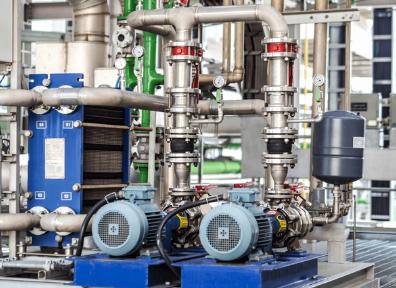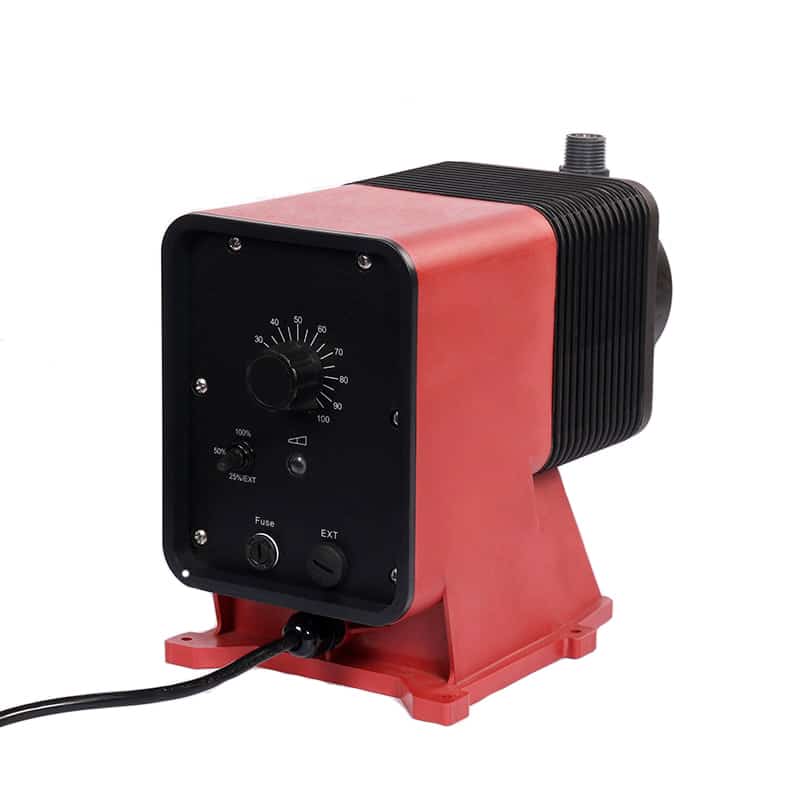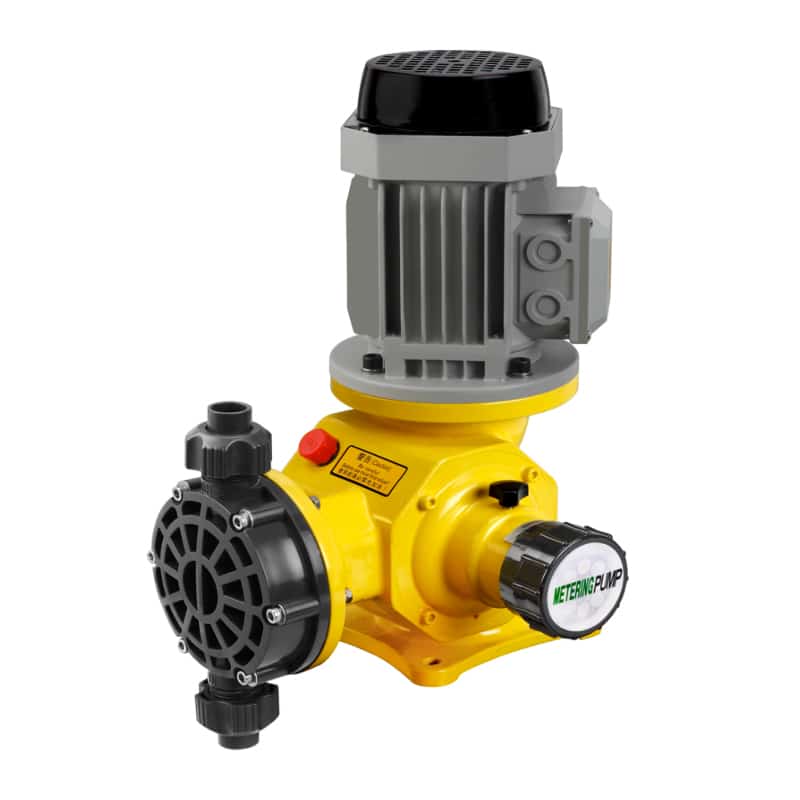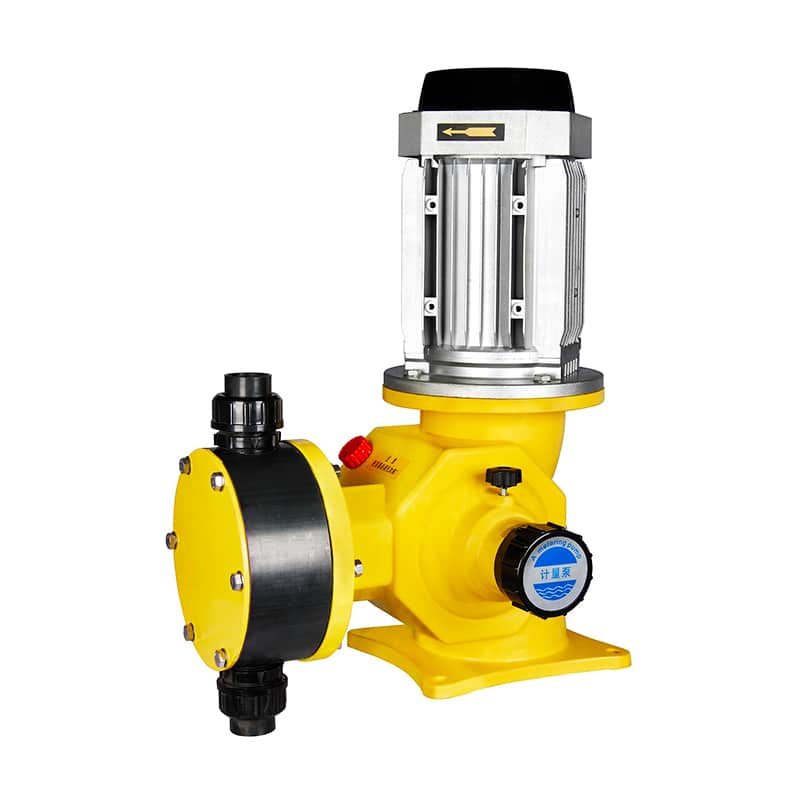Dosing Pump Installation

Dosing pumps are one of the vital pieces of equipment in water treatment and chemical processes, they are used to accurately dose chemicals, additives, or other liquid substances into fluid systems. Dosing pumps must be installed correctly to ensure that the equipment runs smoothly, works efficiently, and reduces unnecessary maintenance and repairs.
What is a dosing pump?
Dosing pumps, also known as metering pumps or proportioning ump, are devices used to put chemicals, additives, or other liquid substances into a fluid system at a precise flow rate. They are commonly used in areas such as water treatment, wastewater treatment, industrial processes, medical devices, and laboratories. Dosing pumps are capable of injecting agents or chemicals into a fluid at a controlled rate, ensuring that the concentration of the agent in the system is at the desired level, allowing for precise control and regulation.

Structure of Dosing Pumps
Dosing pumps usually consist of a pump head, drive unit, controller and piping system with high precision, reliability and stability.
Working Principle
A metering pump draws a quantity of liquid into its chamber and injects chemicals into a tank or pipeline containing the liquid being metered. It is powered by an electric motor or air actuator and has a controller that turns the pump on and off and manages the flow rate. Some models include more sophisticated control systems.
Difference Between Dosing and Metering Pumps
Dosing pumps and metering pumps have some functional overlap, but their main uses and design features are slightly different.
Dosing Pump
- Dosing pump is mainly used to inject chemicals, additives or other liquid substances into the fluid system precisely.
- It is usually used in water treatment, sewage treatment, industrial production and other fields for adding disinfectants, buffers, scale inhibitors and so on.
- The design of dosing pumps focuses more on precisely controlling the flow rate and concentration of chemicals to ensure uniform mixing in the fluid and achieve the desired treatment effect.

Metering pump

- Metering pumps have a wider range of functions and can be used to transfer a variety of liquids, including water, oil, solutions, etc., in addition to injecting chemical.
- It can be used for flow control, pressure control, precise meterin,g and many other applications.
- Metering pump design is more flexible,and can adapt to different process requirements and fluid properties, with a wider range of applications.
Types of Dosing Pumps

Diaphragm metering pumps: Diaphragm metering pumps propel liquids by compressing and relaxing diaphragms and are suitable for handling liquids such as chemicals. HAOSH HJ-Z Mechanical Dosing Pump suitable for conveying liquids containing chemicals.
Plunger pump: Plunger pumps utilize the reciprocating motion of the plunger in the cylinder to draw in and discharge liquids, and are suitable for occasions requiring high-precision metering.
Positive displacement pump: A positive displacement pump is a kind of pump that conveys liquid through volume change. Volumetric pumps are suitable for dosing scenarios that require high precision and constant flow.
Precautions for dosing pump installation
- Select a smooth, ventilated, and corrosive gas-free location to install the dosing pump to ensure its proper operation and maintenance. Ensure that the installation location has sufficient supporting structure to support the dosing pump and its accessories to avoid instability caused by vibration and weight load. Although dosing pumps are generally designed to be corrosion-resistant, it is best to place them in special cabinets or protective sheds.
- Correctly orient the installation according to the dosing pump model and design requirements to ensure its proper operation and discharge.
- Make sure there is a stable power supply near the installation location and correct wiring and grounding according to the electrical requirements of the dosing pump. The pump should be mounted next to the compressed air and below the dosing system to prevent siphoning.
- According to the inlet and outlet size of the dosing pump and the piping connection requirements, select suitable pipe fittings and sealing materials to ensure firm connection and reliable sealing.
- When installing the dosing pump, make sure the liquid level and flow direction are correct to avoid problems such as idling and backflow.
- During installation, pay attention to protecting the dosing pump and accessories from damage by external objects and the environment.
Summary
By following proper installation steps, precautions, and best practices, you can maximize the performance of your dosing pump and reduce the need for maintenance and repairs.
Haosh pump manufacturers are known for their high quality, reliability, and innovation. Their products cover a wide range of industries and applications, offering a range of various pumps such as solenoid dosing pumps, hydraulic dosing pumps, diaphragm metering pumps, as well as chemical dosing system equipped for use with the pumps, agitators, and accessories such as backpressure valves, calibration column, and more.If you have any questions or need further assistance with your dosing pump installation, please feel free to contact our team of professionals.
